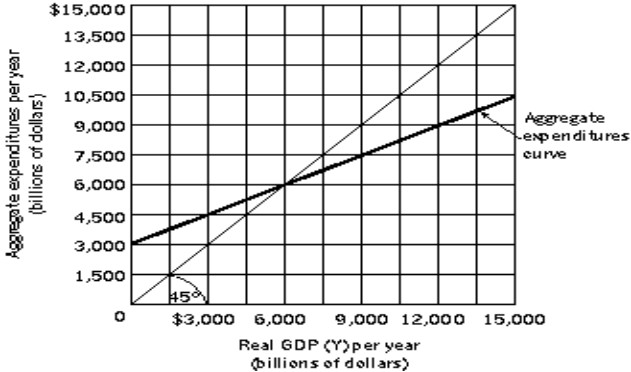Multiple Choice
Difficulty: Medium Figure 13-4 
-Refer to Figure 13-4. Let Y = real GDP, AE = Aggregate Expenditures, C = Consumption,
IP = Planned Investment. Suppose AE = C + IP. IP is autonomous and the consumption function is C = $1,000 billion + 0.5Y. If Y= $6,000 billion, what is the value of consumption and planned investment?
A) C = $3,000 billion, IP = $3,000 billion
B) C = $4,000 billion, IP = $2,000 billion
C) C = $5,000 billion, IP = $1,000 billion
D) C = $6,000 billion, IP = zero
Correct Answer:

Verified
Correct Answer:
Verified
Q28: The aggregate demand curve can be derived
Q40: Consider a simple aggregate expenditure model where
Q92: Figure 13-3 <img src="https://d2lvgg3v3hfg70.cloudfront.net/TB5507/.jpg" alt="Figure 13-3
Q119: Figure 13-5 <img src="https://d2lvgg3v3hfg70.cloudfront.net/TB5506/.jpg" alt="Figure 13-5
Q121: Figure 13-5 <img src="https://d2lvgg3v3hfg70.cloudfront.net/TB5506/.jpg" alt="Figure 13-5
Q122: If an economy is in equilibrium,<br>A) planned
Q134: The multiplier effect is triggered by a
Q159: Figure 13-1 <img src="https://d2lvgg3v3hfg70.cloudfront.net/TB5507/.jpg" alt="Figure 13-1
Q178: What is the multiplier effect, that is,
Q207: Aggregate expenditures that vary with real GDP